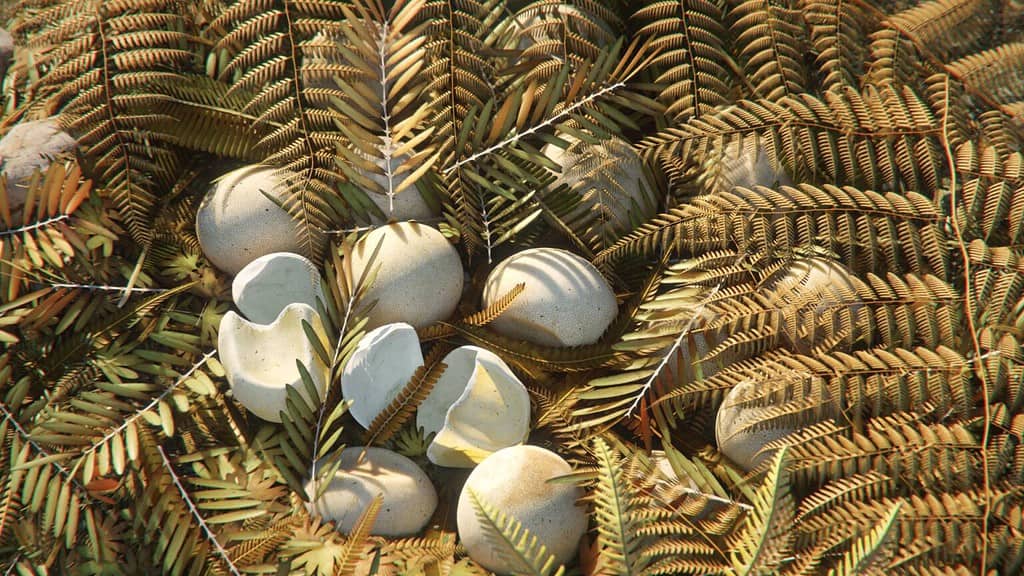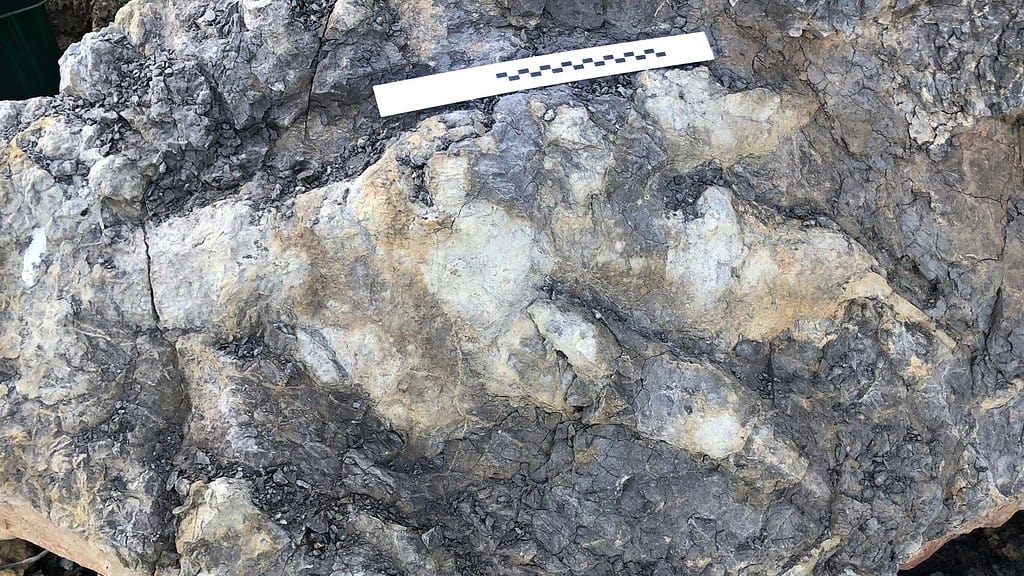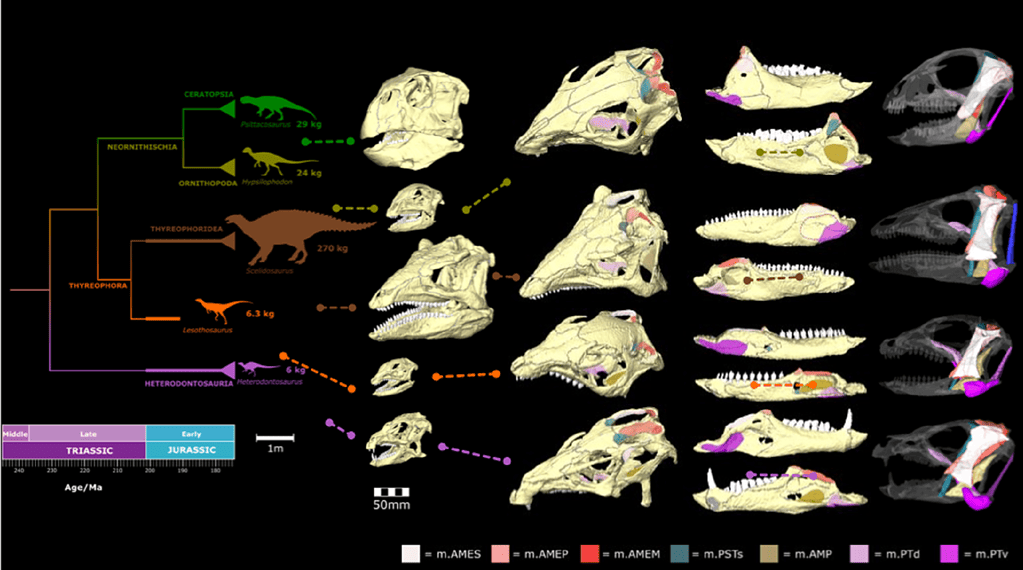Dinosaurs are some of the most fascinating and mysterious creatures that have walked the Earth. We’ve learned a lot about this unique and ancient world of dinosaurs — but there’s still plenty left to learn. Each new finding reveals more about their behavior, physiology, and the ecosystems they dominated.
So let’s dive into some of the latest groundbreaking research in dinosaur paleontology, shedding light on everything from the dinosaur with the longest neck to the complexities of dinosaur diets and even the surprising predator-prey dynamics involving mammals.
The dinosaur with the longest neck

A recent study led by Andrew J. Moore from Stony Brook University unveils that Mamenchisaurus sinocanadorum, a Late Jurassic Chinese sauropod, had a 15-meter-long neck, surpassing any known sauropod.
Sauropods, known for their enormous size, had adaptations like hollow bones and unique feeding mechanisms. Mamenchisaurus, with its record-breaking neck length, exemplifies sauropods’ evolutionary trajectory toward maximizing food intake efficiency and managing body heat through increased surface area.
“Biomechanical studies of the mamenchisaurid neck suggest that it was elevated at only a relatively shallow angle above the horizontal (20-30°). However, even at this relatively shallow angle, the extreme length of the neck would still mean that the animal’s head could reach heights of around 7.5 to 10 meters above ground level, facilitating feeding on tree foliage,” said co-author Paul Upchurch, a professor of palaeobiology from the University College London.
Early dinosaurs laid leathery eggs

This conclusion is based on the discovery and analysis of a new sauropodomorph dinosaur species from the Early Jurassic period in China. Researchers observed that the eggshells were thicker than those of typical soft-shelled eggs but thinner than hard-shelled eggs. This finding challenges previous beliefs about dinosaur egg evolution and suggests a more complex evolutionary pathway for egg characteristics across different reptilian groups.
Discovered in Guizhou, China, the dinosaur (named Qianlong shouhu) belongs to sauropodomorphs, early long-necked herbivores. The site included adult skeletons and nests, suggesting developmental changes from birth. Microstructural analysis of eggshells indicated a texture between soft and hard shells. This discovery, combined with comparative analysis of over 200 reptilian species, suggests an evolutionary trajectory in egg characteristics from early reptiles to birds.
Some mammals preyed on dinosaurs
Mammals became the dominant creatures after the downfall of dinosaurs. But some mammals weren’t afraid of dinosaurs. Or rather, they weren’t afraid of some dinosaurs.
In China, a fossil discovery containing Repenomamus robustus, a small mammal, and Psittacosaurus lujiatunensis, a dinosaur, suggests mammals sometimes preyed on smaller dinosaurs. This challenges the established view of dinosaurs as dominant predators. The entangled fossils, portraying the mammal attacking the dinosaur, reveal a unique interaction, with R. robustus potentially hunting P. lujiatunensis.
This finding, altering our understanding of the Cretaceous ecosystem, indicates a more complex predator-prey dynamic than previously thought.
The biggest meat-eating dinosaur footprint

The recent discovery of an almost meter-long dinosaur footprint in Yorkshire, England, has added a remarkable chapter to the history of paleontology. This footprint, which is the largest of its kind ever found in the region, is believed to have been made by a giant, meat-eating theropod dinosaur during the Jurassic Period, around 166 million years ago.
This discovery was made by local archaeologist Marie Woods, who stumbled upon the fossil by chance. The footprint’s impressive size of 80 centimeters in length (2.6 feet) is not its only notable feature; it also appears to capture a rare moment when the dinosaur was either resting or crouching, providing unique insight into the behavior of these ancient creatures.
CT scan shows a forgotten dinosaur had “spidey senses”
The recent study of a Thescelosaurus neglectus skull, known as Willo, housed at the North Carolina Museum of Natural Sciences, has offered new insights into the sensory capabilities and potential behaviors of this prehistoric species. Using CT scanning technology, researchers were able to reconstruct the soft tissues in Willo’s skull, such as the brain and inner ear, which were lost during the fossilization process.
This analysis, published in Scientific Reports, reveals that Thescelosaurus, a small but heavy herbivore from the late Cretaceous period, possessed a unique combination of sensory traits, including an exceptional sense of smell and outstanding balance.
Herbivorous dinosaurs ate food in different ways

Usually, we think of dinosaurs as herbivorous or carnivorous and stop at that. But a recent study by scientists from the Natural History Museum and the Universities of Bristol and Birmingham has shed light on the diverse feeding habits of early plant-eating dinosaurs. The study, published in the journal Current Biology, utilized CT scans of dinosaur skulls to reconstruct jaw muscles and measure bite force, thereby providing new perspective on the evolution of dinosaur feeding strategies.
The research showed that dinosaurs displayed a wide range of adaptations to a plant-based diet, contrary to what was previously believed. Some dinosaurs had large jaw muscles relative to their skull size, enabling them to generate a strong bite force suitable for tough vegetation. Meanwhile, other dinosaurs with smaller jaws compensated with larger body sizes to achieve a strong bite.
Giant dinosaurs kept evolving time and time again
A recent study has significantly advanced our understanding of sauropod dinosaurs. Sauropods are known for their long necks and massive body sizes, evolving body masses far exceeding those of today’s largest terrestrial animals. But, as it turns out, these dinosaurs didn’t just evolve once. They evolved superlative size at least 36 times over a hundred million years.
Interestingly, the study shows that the maximum body mass of sauropods rapidly increased early in their evolutionary history, starting from under 5,000 kg and eventually leveling off around 40,000 kg, with some notable exceptions.
In conclusion, the field of dinosaur paleontology continues to evolve, with each discovery shedding new light on these magnificent creatures that once roamed our planet. From the astonishing neck length of Mamenchisaurus sinocanadorum to unique feeding habits and predator-prey dynamics, these findings reveal the complexity and diversity of dinosaur life. There’s still plenty more out there to learn.


